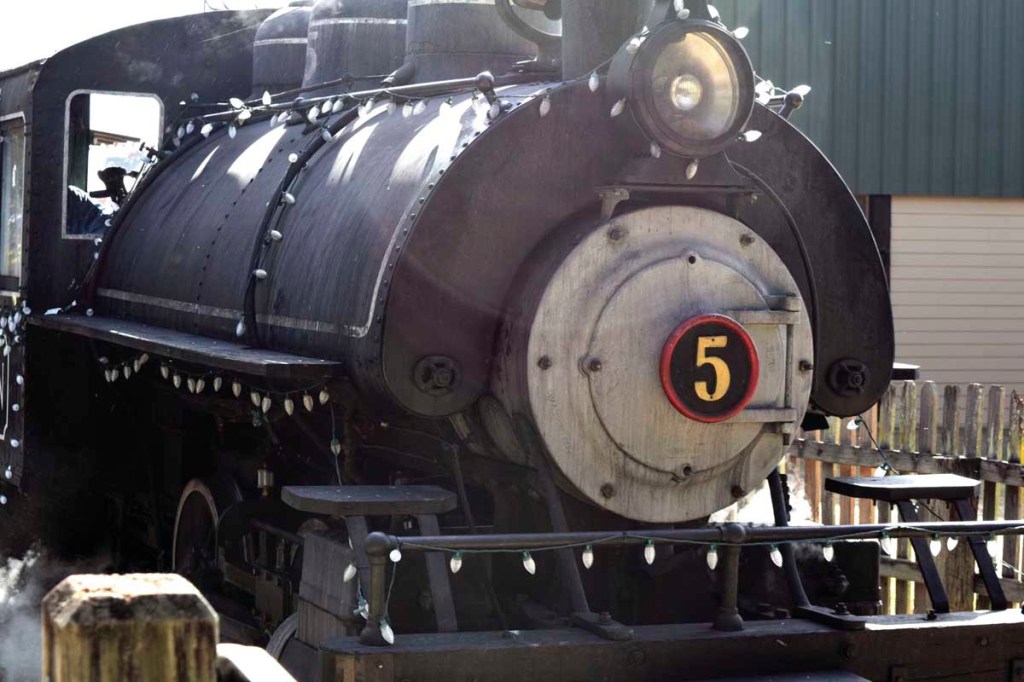Ag museum offers taste of cane milling
Published 8:00 am Tuesday, December 3, 2019

- The Georgia Museum of Agriculture's steam engine train.
TIFTON — Junebug paced in a circle operating the cane mill at the Georgia Museum of Agriculture (GMA) on Nov. 23. The 20-plus year-old mule didn’t like being the center of attention. When she took a break from the mill, she preferred to stay behind it away from the crowd.
Her shyness doesn’t keep Junebug from being a hit with the locals. A few of the children waiting to board the train mentioned her name several times before getting to the mill.
As Junebug worked the press, GMA staffers collected the juice and let guests taste it before taking it to the cooking kettle. Gina Beckman educated visitors on the process.
“You feed the cane into the mill and press the cane flat making a juice,” she said. “The juice is then funneled through a filter into a bucket.” For those taking a cup, Beckman cautioned that drinking too much of the cane juice could have a laxative effect. That would have been bad in the days of outhouses.
From the press, it goes to the cooking kettle. The work involved at the kettle is hot and it takes a watchful eye and diligent work. Larry Moore explained that it takes around four hours for the juice to cook down into syrup. Russell Harrell kept the temperature adjusted by managing the fire under the kettle while Bobby Williams strained impurities from the mixture. Moore’s grandson, Jadon, kept the edges of the kettle clean and cooled, braving the heat and steam that arose frequently.
According to Moore, it takes around 10 gallons of cane juice to produce one gallon of syrup. For many families in rural areas around the turn of the twentieth century, this event would provide them with their yearly supply of sweets. Families would bring their cane to the community mill once a year (along with a hog or two for a community “hog killin’”). If there was enough of the juice left, it would be cooked down past the point of syrup and made into taffy.
Garrett Boone, director of the GMA, was on hand to tell guests that the skills and methods exhibited at the event were part of the GMA’s mission to keep traditions alive.
“Cane grinding and syrup cooking are becoming a lost art,” he said.
With this and other events going on at the GMA, Boone and his staff are living out the historic mission of the museum.
Along with the syrup, visitors were treated to Dutch oven-cooked biscuits and sausage. They could also witness the blades of the sawmill zip through rough-cut slabs of timber.
Slats from this process are used throughout the historic village as siding for the buildings or furniture. Carter Choate explained the uniqueness of the quarter-sawn slats that were being sawn.
“Quarter-sawn is the strongest way to cut timber. It is less susceptible to cupping as well,” he said.
If cane and wood were not enough, guests could also watch as a steam engine powered the cotton mill, making it churn out bales of soft southern snow.
Just down the road from the cotton mill, the general store had ice cream and peanut butter and jelly sandwiches.
The event showcased skills and technologies used in rural areas during the late 1800s and early 1900s. Keeping these arts and traditions alive is vital not only to the GMA, but also to the numerous individuals who showed up to enjoy the sweeter side of southern antiquity. The GMA plans to host the syrup-making event each year.



